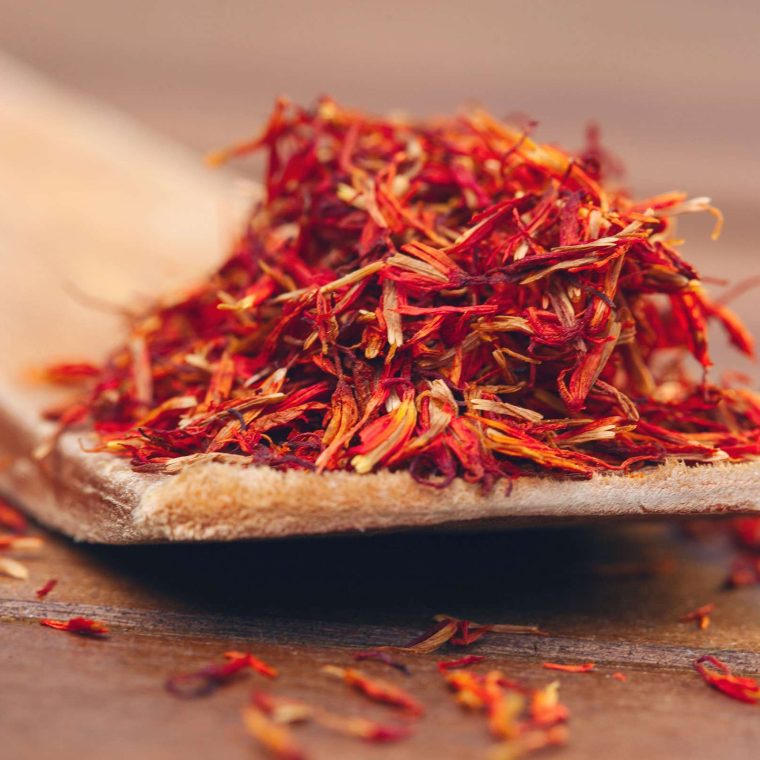Saffron contains over 150 compounds, including lipophilic and hydrophilic compounds such as proteins, amino acids, minerals, vitamins (especially riboflavin and thiamine), pigments like crocin, anthocyanins, carotenoids, lycopene, flavonoids, starch, and other chemical compounds. Crocins, crocetin, and other monoterpenoid aldehydes such as picocrocin and safranal are among the most important active metabolites of saffron carotenoids. Crocin is the main pigment of saffron, possessing antioxidant, anticancer, and memory-enhancing properties. According to studies, saffron and its crocins are recognized as the most important anticancer compounds due to their ability to induce changes in gene expression and apoptosis in cancer cells. Crocetin may also inhibit the growth of certain cancer cells by reducing DNA, RNA, and protein synthesis, inhibiting RNA polymerase II in neoplastic cells, and interfering with the structure of histone H1 and DNA-H1, while the toxicity of saffron and its compounds on normal cells is low and is considered non-toxic when consumed orally.
Saffron has attracted significant attention in studies related to plant compounds and spices concerning cancer. Scientifically known as Crocus Sativus L., saffron is one of the valuable products in Iran’s non-oil export development cycle. Belonging to the iris family, saffron is recognized as the most expensive agricultural and medicinal product globally, holding a special position in generating foreign currency, preventing migration, and creating jobs. According to available statistics, Iran has over 120,000 hectares of land under saffron cultivation, producing 440 tons of saffron, which constitutes over 88% of global production. In many cultures, saffron is recognized as a medicinal herb with various medicinal applications. In traditional Chinese medicine, saffron is sweet and has a cooling nature, associated with improving heart and liver functions. Its main uses include blood enhancement, reducing fatigue, and detoxifying the body. Saffron is commonly used to treat conditions such as high fever and to assist in dissolving blood clots. Research indicates that saffron can also prevent the growth of cancer cells. Small amounts of saffron may help increase contractions in pregnant women. Researchers at the University of Aquila in Italy have shown that saffron affects the efficiency of primary visual cells in gene regulation. These studies have demonstrated that this expensive plant not only protects visual cells from damage but may also slow or even reverse the progression of debilitating diseases like AMD.



